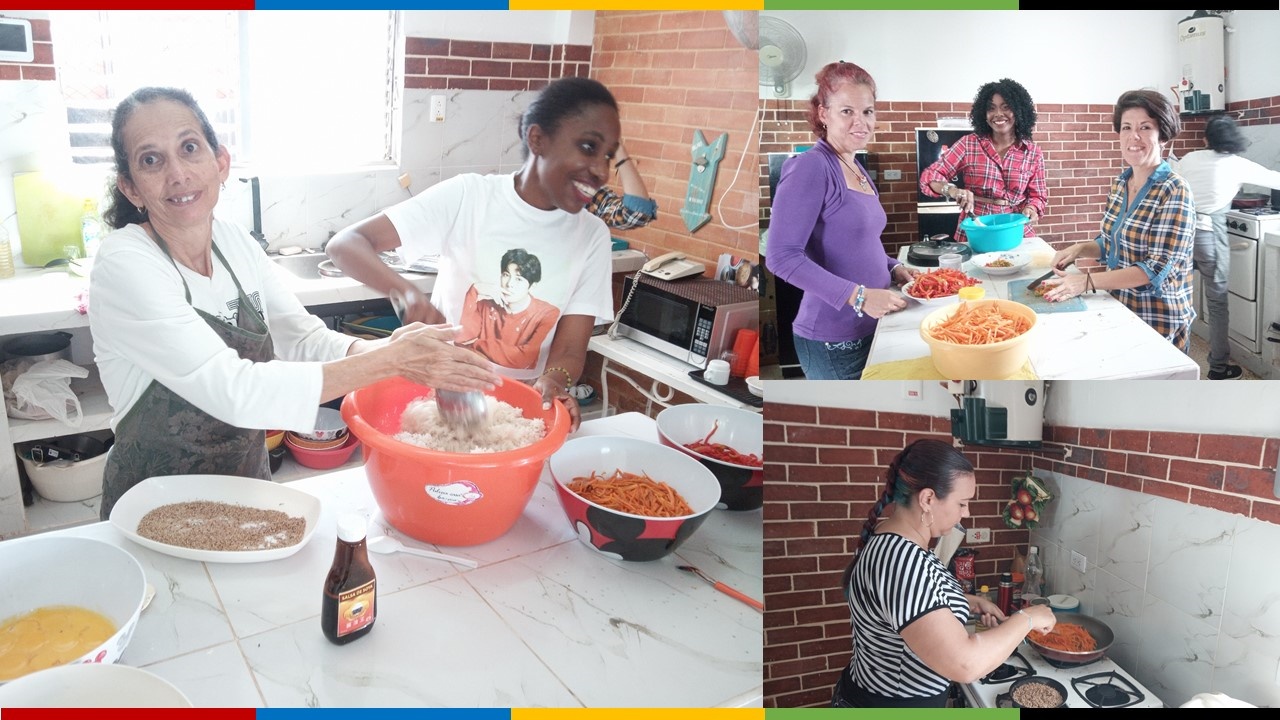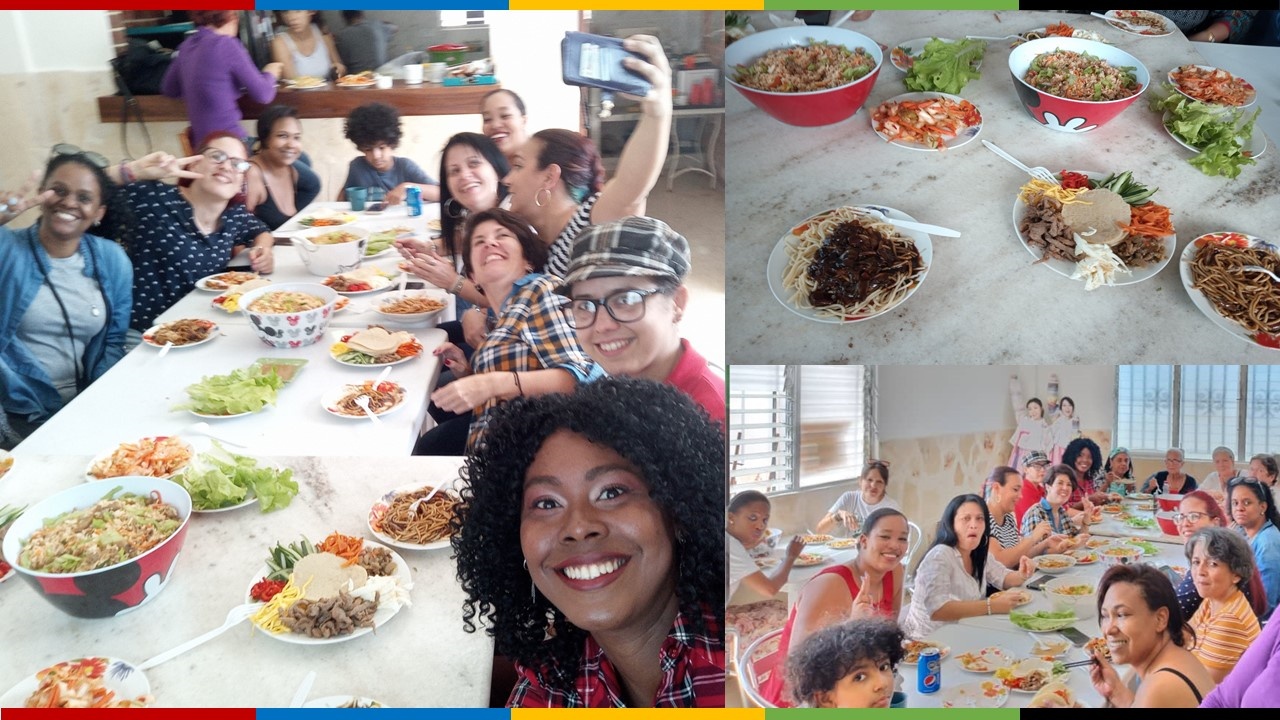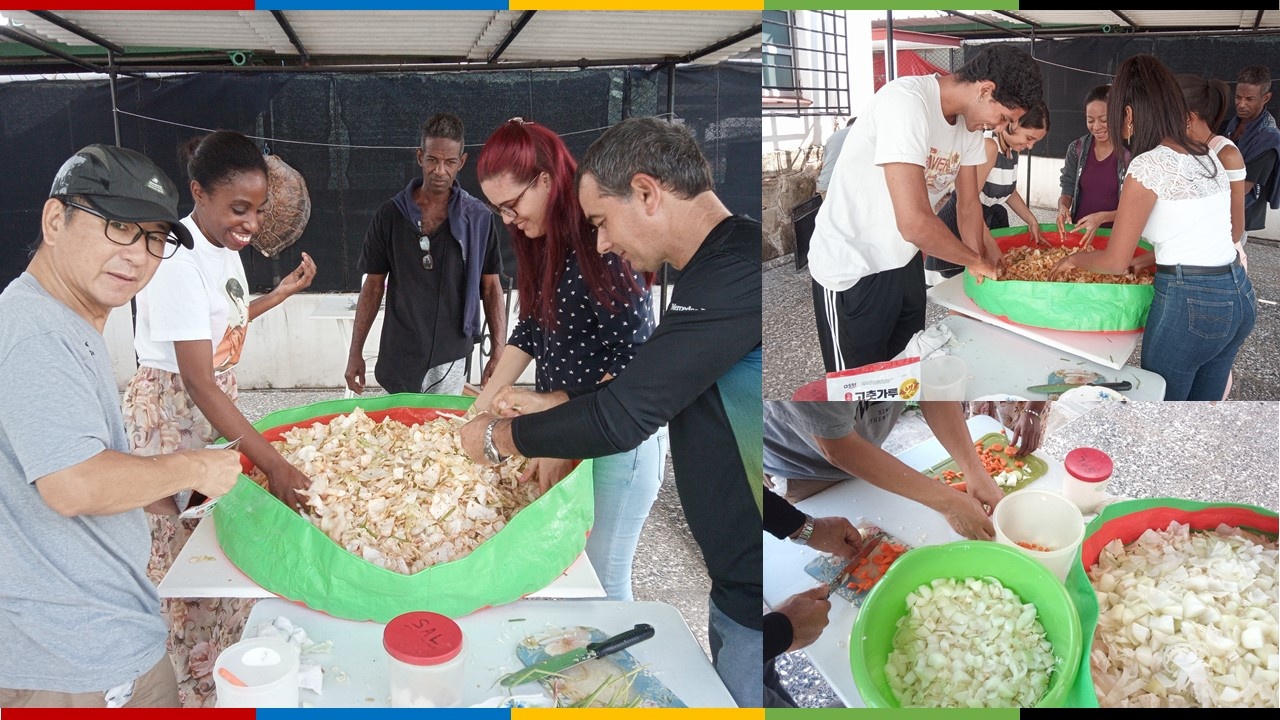- 한국어
- English
- 日本語
- 中文
- العربية
- Español
- Français
- Deutsch
- Pусский
- Tiếng Việt
- Indonesian
By Honorary Reporter Dayviana Díaz from Cuba
Photos = Dayviana Díaz
Members of the Cuba Ama Korea Club on Jan. 28 celebrated Seollal (Lunar New Year) with students of a Korean-language school at a culinary festival hosted by the Korean Cultural Center and the school in Havana.
In Korea, Seollal this year was celebrated from Jan. 21-24. For the Havana event, the menu deviated slightly from traditional dishes served on the holiday due to lack of ingredients but the food was delicious and represented traditional Korean cuisine and culture.

Barbara Moreno shows how to make exquisite Korean dishes.
Jung Myung-jae, a leader of the ethnic Korean community in Cuba, prepared jjajangmyeon, or noodles covered in thick sauce made from black bean paste and made with diced pork and vegetables, for those attending the Korean cuisine festival. The food's trademark dark color and slightly sweet flavor make the dish unique in Korean cuisine.

We sat together at the table to eat gujeolpan, bibimbap, jjajangmyeon and kimchi.
Next, the participants got the chance to make kimchi from scratch. The freshly made version was not as spicy, but gochugaru (chili powder), spring onions, garlic, and ginger created a unique flavor of the staple of Korean cuisine.

Members of Cuba Ama Korea and Korean-language students learn to make kimchi.
kalhong617@korea.kr
*This article is written by a Korea.net Honorary Reporter. Our group of Honorary Reporters are from all around the world, and they share with Korea.net their love and passion for all things Korean.
